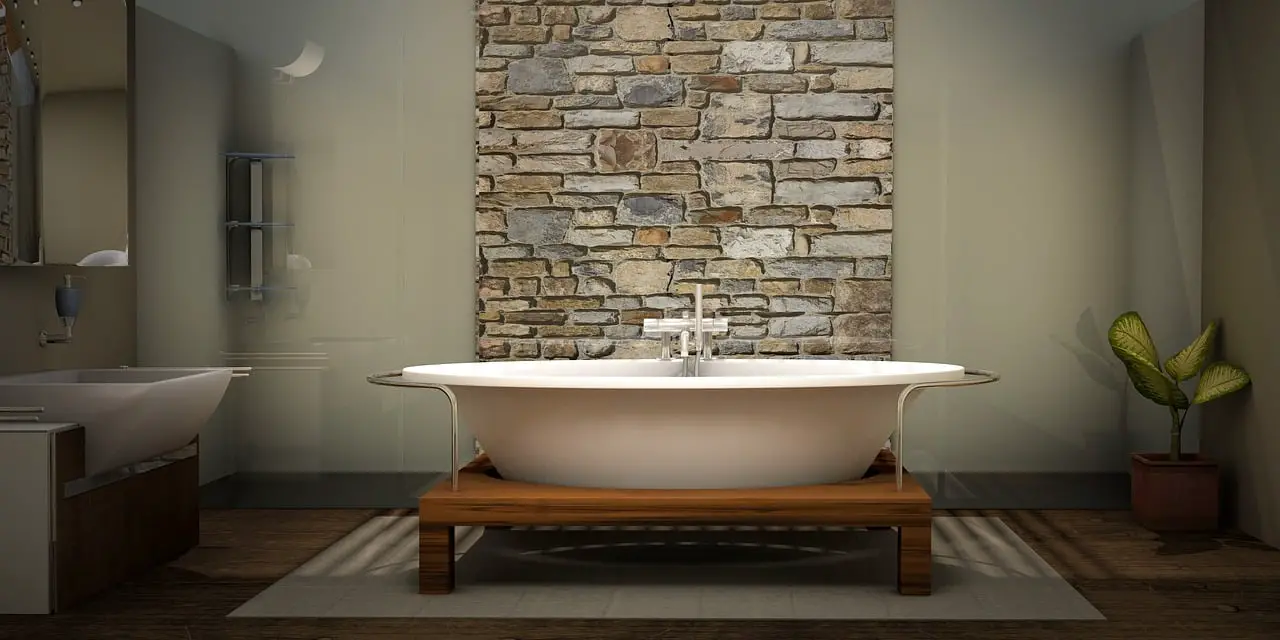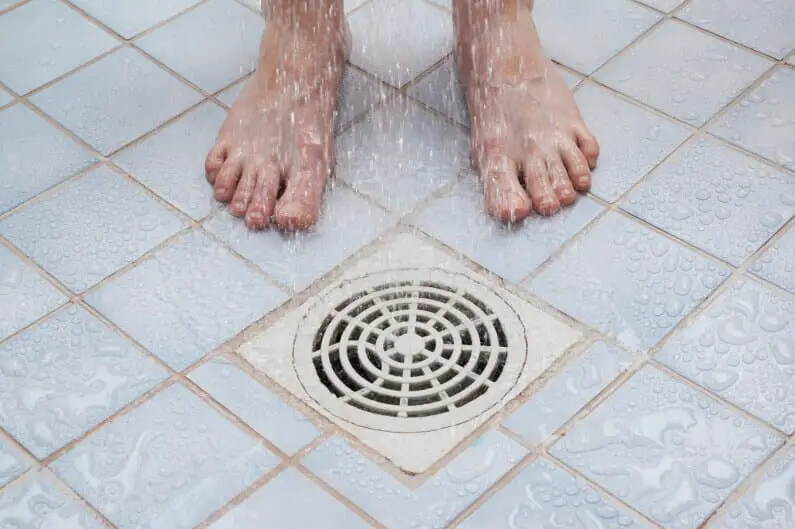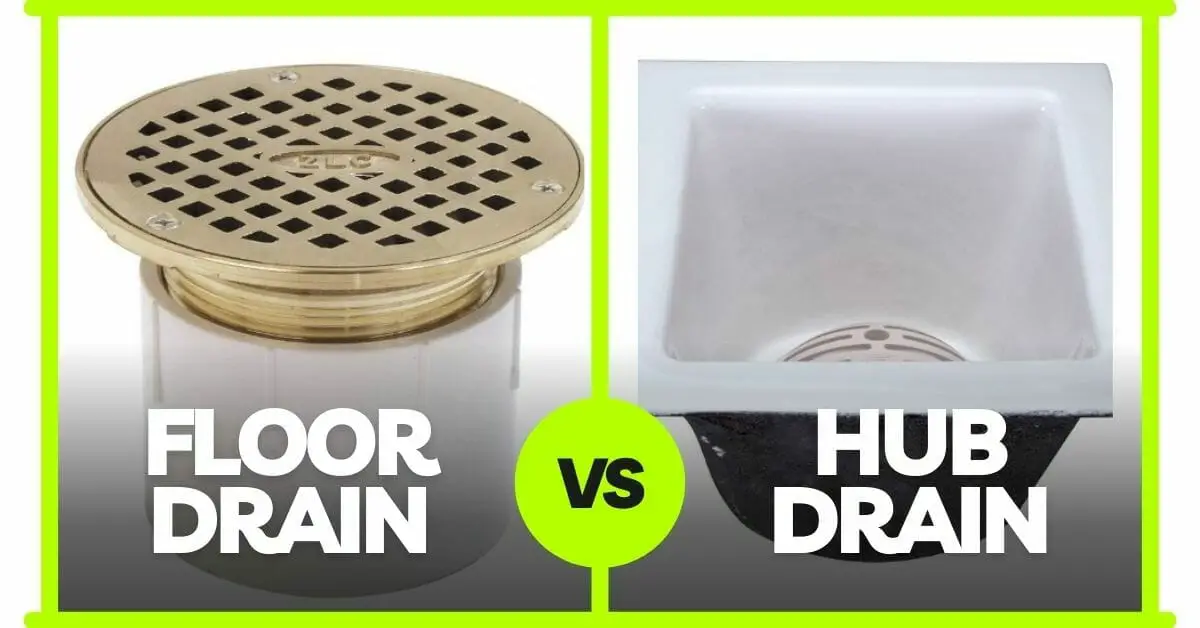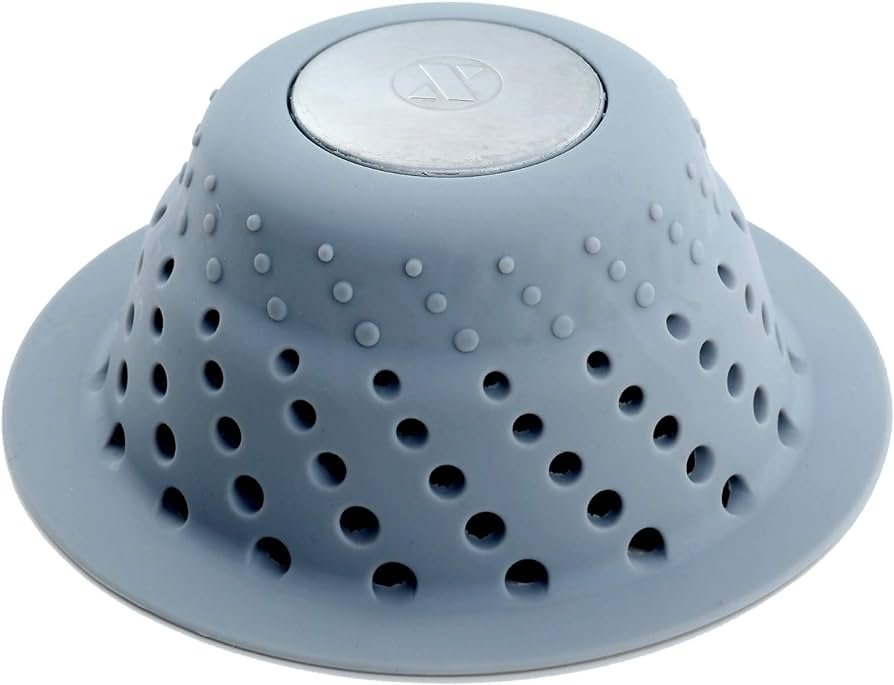Plumbing might initially seem overwhelming, but it’s much easier to understand once you break it down. Think of a residential plumbing diagram as a map that shows how water flows through your home. It’s a handy tool, especially for beginners, and can make navigating your plumbing system a breeze.
A plumbing diagram offers several benefits: it helps you understand water flow, saves time and money on repairs, simplifies planning for home improvements, and prepares you to handle emergencies. In this guide, I’ll explain the basics of plumbing diagrams in a simple, easy-to-follow way. Ready? Let’s get started!
Plumbing Diagrams
Plumbing diagrams show the layout of your home’s plumbing system, including Water Supply Lines, Drainage Systems, and other components. A Plumbing Diagram helps you determine where pipes and fixtures are located, which is crucial for repairs or renovations.

Importance Of Diagrams
Plumbing diagrams are essential for several reasons. They provide a clear picture of your home’s Plumbing System Components. This helps in identifying issues quickly. Here are some key points about the importance of these diagrams:
- Easy Troubleshooting: With a diagram, you can locate issues without guesswork.
- Efficient Repairs: Knowing the exact layout saves time during repairs.
- Cost-Effective: Reduces the need for professional help, saving money.
- Safety: Helps in preventing accidents by knowing pipe locations.
Consider a typical plumbing diagram. It shows the path of Water Supply Lines and Drainage Systems. This helps in planning any DIY project. Here’s a simple table showing the benefits:
| Benefit | Description |
|---|---|
| Easy Troubleshooting | Locate issues without guesswork. |
| Efficient Repairs | Saves time during repairs. |
| Cost-Effective | Reduces the need for professional help. |
| Safety | Prevents accidents. |
Basic Components Explained
Understanding the basic components of a Residential Plumbing system is crucial. These components include pipes, fixtures, and valves. Here’s a brief explanation:
- Pipes: Carry water to and from fixtures. Commonly made of PVC or copper.
- Fixtures: Include sinks, toilets, and showers. These are the endpoints of the plumbing system.
- Valves: Control the flow of water. Necessary for shutting off water during repairs.
Each component plays a vital role in the Home Plumbing Layout.
Pipes connect to fixtures, which are controlled by valves. Here’s a simple table summarizing the components:
| Component | Description |
|---|---|
| Pipes | Carry water to and from fixtures. |
| Fixtures | Include sinks, toilets, and showers. |
| Valves | Control the flow of water. |
Knowing these components is the first step in Plumbing For Beginners. It makes any plumbing task more accessible, whether a minor repair or a major renovation. Equip yourself with the right Plumbing Tools, and you’re ready to go.
Types Of Plumbing Systems
Understanding the basics of residential plumbing is essential for every homeowner. A plumbing system is crucial for the home; it supplies water and removes waste. Knowing the different types of plumbing systems can help maintain and troubleshoot issues.
Water Supply Systems
Water supply systems provide clean water to a home. These systems comprise several components that ensure water flows efficiently and safely. The main elements include:
- Water Source: This can be a well, a city water supply, or other sources.
- Pipes: These are usually made of copper, PEX, or PVC. They carry water from the source to various parts of the home.
- Valves: Control the flow of water. They can be shut off during repairs or in emergencies.
- Fixtures include faucets, showerheads, and toilets where water is used.
Water supply systems must be adequately maintained to avoid leaks and contamination. Regular checks and timely repairs help keep the system efficient. Good water pressure is also essential for the system to function well. Ensuring that pipes are free from blockages is crucial.
Drainage Systems
Drainage systems remove wastewater from the home. They are designed to ensure waste and water exit the home safely and hygienically. Key components include:
- Drain Pipes: Carry wastewater from sinks, showers, and other fixtures to the sewer or septic system.
- Traps: U-shaped pipes under sinks that prevent sewer gases from entering the home.
- Vent Pipes: Allow air to enter the drainage system, enabling proper drainage and preventing suction.
- Sewer Lines: Carry waste from the home to the main sewer or septic tank.
Properly maintained drainage systems prevent clogs and backups. Regular cleaning of traps and drains helps in maintaining a smooth flow. It is also important to avoid flushing non-degradable items down the toilet to prevent blockages. Keeping the system free from blockages ensures that waste is removed efficiently.
Essential Symbols In Diagrams
Essential symbols in diagrams play a crucial role. They help in understanding the layout, making installations and repairs easier. This guide will cover common plumbing symbols and how to interpret them.
Common Plumbing Symbols
Recognizing common plumbing symbols is the first step in reading a plumbing schematic. These symbols represent different parts of the plumbing system. Here are some of the basic symbols you will see in a plumbing blueprint:
- Pipe: A simple line represents a pipe.
- Elbow: A bend in the line shows an elbow joint.
- Valve: A symbol with a circle and a line through it shows a valve.
- Sink: A rectangle with two lines indicates a sink.
- Toilet: A circle with a line down the middle represents a toilet.
Understanding these symbols makes it easier to read a plumbing diagram guide. Here is a simple table of more symbols:
| Symbol | Description |
|---|---|
| Line | Pipe |
| Circle with Line | Valve |
| Rectangle | Sink |
| Circle | Toilet |
Interpreting Symbols
Once familiar with common symbols, interpreting them becomes easier. Each symbol on a plumbing flow diagram represents a specific part of the plumbing system. Here are some tips to interpret these symbols:
- Look for the direction of flow. Arrows usually show this.
- Identify the type of pipes used. Different lines might represent different materials.
- Pay attention to the connections. How pipes join can indicate the type of fitting used.
Understanding the plumbing symbols chart helps with planning and troubleshooting. For example, if you see a circle with a line, it means a valve is present. Knowing this can help locate and shut off water, which is crucial during repairs. Being able to read a plumbing diagram guide helps with efficient plumbing installation basics.
Interpreting these symbols is a valuable skill. It simplifies the process of understanding a residential plumbing layout. This skill helps in planning, installing, and maintaining home plumbing systems.
Creating A Plumbing Diagram
Understanding a residential plumbing diagram is essential for beginners who want to tackle plumbing projects. Creating a plumbing diagram may be challenging at first. But you can make a clear and compelling diagram with the right tools and steps.
Tools Required
Before starting, gather the necessary tools. Having the right tools will make the process smoother and more efficient. Here are the essential tools you will need:
- Pencil and Eraser: This is for sketching and making corrections.
- Graph Paper: Helps in drawing to scale.
- Ruler: Ensures straight lines and accurate measurements.
- Plumbing Symbols Chart: Reference for standard plumbing symbols.
- Measuring Tape: Measure the actual distances in your home.
- Coloured Pencils: Different colours to distinguish various pipes and fixtures.
Using the right tools is critical. A pencil and eraser allow you to make changes quickly. Graph paper helps you draw accurately. The ruler is for straight lines.
Step-by-step Process
Creating a plumbing diagram involves several steps. Follow this simple process to create a clear and compelling diagram:
- Measure Your Space: Use a measuring tape to measure the dimensions of your rooms. Note down the measurements.
- Draw the Layout: Draw your home’s layout on graph paper. Include all rooms and significant fixtures.
- Add Plumbing Fixtures: Mark the locations of sinks, toilets, showers, and other fixtures using standard plumbing symbols.
- Draw Pipes: Use coloured pencils to draw the pipes. Different colours can represent hot water, cold water, and drainage pipes.
- Label Everything: Clearly label all fixtures and pipes. This makes the diagram easy to understand.
- Review and Revise: Double-check your measurements and labels. Make any necessary corrections.
Start with measuring your space accurately. Draw the layout on graph paper. Next, add the plumbing fixtures using standard symbols. Draw the pipes using different colours for clarity. Label everything clearly. Finally, review and make any needed revisions.
Key Components Of Residential Plumbing
Understanding a residential plumbing diagram can be quite helpful. It helps you understand how water flows in your home. This guide will cover the key components, which include pipes, fittings, valves, and fixtures. It is essential to know what they do and how they work together.
Pipes And Fittings
Pipes and fittings are essential in any plumbing system. Pipes carry water to and from different places in your home, and fittings connect these pipes together. Various types of pipes are used in homes, including PVC, copper, and PEX.
Here are some key points to know about pipes:
- PVC pipes are lightweight and easy to install.
- Copper pipes are durable and can handle high temperatures.
- PEX pipes are flexible and resistant to freezing.
Fittings are equally important. They help change the direction of pipes or join different sizes of pipes. Below is a table showing common types of fittings and their uses:
| Fitting Type | Use |
|---|---|
| Elbow | Change direction |
| Tee | Join three pipes |
| Coupling | Connect two pipes |
Valves And Fixtures
Valves and fixtures control the flow of water in your home. Valves are used to stop or allow water flow. Fixtures are the end points where water comes out, like faucets and showers.
Here are some important types of valves:
- Gate valve: Best for on/off control.
- Ball valve: Offers quick shut-off.
- Check valve: Prevents backflow.
Fixtures add convenience and functionality. Below is a table showing common fixtures and their uses:
| Fixture Type | Use |
|---|---|
| Faucet | Provides water for sinks |
| Showerhead | Provides water for bathing |
| Toilet | Disposes of waste |
Water Supply Layout
Understanding the basics of a residential plumbing diagram is essential for any homeowner. This knowledge helps in identifying potential issues and maintaining the system. The water supply layout is a critical part of the plumbing system. It ensures water reaches every fixture and appliance efficiently. Let’s explore the main supply line and branch lines in a residential plumbing diagram.
Main Supply Line
The main supply line is the backbone of your plumbing system. It brings water from the municipal source into your home. Typically, this line connects to a water meter. Here are some key points about the main supply line:
- Material: Usually made of copper, PVC, or PEX.
- Size: Generally 3/4 inch to 1 inch in diameter.
- Location: Often runs underground, entering the home through the basement or crawl space.
A typical main supply line includes a shut-off valve. This valve is crucial for emergency situations. You can stop the water flow to your entire home with this valve. Below is a simple table summarizing the main supply line components:
| Component | Description |
|---|---|
| Material | Copper, PVC, PEX |
| Size | 3/4 inch to 1 inch |
| Location | Underground, enters through basement or crawl space |
| Shut-off Valve | Stops water flow in emergencies |
Branch Lines
The branch lines distribute water to various fixtures. These fixtures include sinks, toilets, and showers. Each branch line connects to the main supply line. Key points about branch lines are:
- Material: Similar to the main line, often copper, PVC, or PEX.
- Size: Typically smaller, around 1/2 inch in diameter.
- Function: Direct water to specific fixtures and appliances.
Branch lines usually have their own shut-off valves. These valves help in isolating water flow to individual fixtures. This is useful during repairs or maintenance. Here is a table summarizing branch line components:
| Component | Description |
|---|---|
| Material | Copper, PVC, PEX |
| Size | 1/2 inch |
| Function | Direct water to fixtures |
| Shut-off Valve | Isolate water flow to fixtures |
Understanding branch lines helps in troubleshooting plumbing issues. It ensures that water is delivered efficiently to every part of your home.
Drainage System Layout
Understanding the residential plumbing diagram is crucial for any homeowner. It helps in identifying the various components of the drainage system layout. This guide is designed for beginners. It will explain the basic elements and their functions in simple terms.
Sewage Lines
The sewage lines are essential parts of the drainage system. They carry waste water from your home to the main sewer. These lines usually connect to toilets, sinks, and showers.
Sewage lines are made of durable materials. Common materials include PVC and cast iron. These materials prevent leaks and blockages. Regular maintenance is important to keep them functioning properly.
Here are some key points to remember about sewage lines:
- They should have a slight slope. This helps in the smooth flow of waste water.
- Blockages can occur if improper items are flushed. Always dispose of waste correctly.
- Periodic inspections can help detect issues early. This can prevent major problems.
Vent Pipes
Vent pipes are another critical component of the drainage system. They allow air to enter the plumbing system. This prevents water from being siphoned out of traps. Vent pipes also help in maintaining the proper pressure in the system.
These pipes usually extend through the roof. They can also connect to other vent stacks. Vent pipes are essential for the proper functioning of the drainage system. Without them, you may experience slow drains and bad odors.
Here are some key points about vent pipes:
- They should be free of obstructions. This ensures proper airflow.
- Vent pipes should be installed correctly. Incorrect installation can lead to issues.
- Regular checks can help ensure they are functioning well. Look for any signs of blockages.
Common Plumbing Issues
Understanding a Residential Plumbing Diagram for Beginners can seem daunting. Plumbing systems have many components. Common plumbing issues can arise in any home. Knowing the basics helps with Plumbing Troubleshooting and maintenance. This guide covers two frequent problems: Leaking Pipes and Clogged Drains.
Leaking Pipes
Leaking pipes are a common issue in many homes. They can cause water damage if left untreated. Here are some key points to consider:
- Check for visible leaks regularly.
- Inspect areas under sinks and near water heaters.
- Look for wet spots on walls and ceilings.
Leaking pipes often occur at Pipe Connections. Tightening connections can sometimes solve the problem. In other cases, you may need to replace the damaged section. Here’s a quick guide:
| Step | Description |
|---|---|
| 1 | Turn off the water supply. |
| 2 | Drain the water from the pipe. |
| 3 | Use a pipe cutter to remove the damaged section. |
| 4 | Install a new section using appropriate fittings. |
| 5 | Turn the water back on and check for leaks. |
Regular maintenance can prevent leaks. Follow these Plumbing Maintenance Tips to keep your system in good shape:
- Check your Water Supply Lines annually.
- Replace old pipes before they fail.
- Use pipe insulation to prevent freezing.
Clogged Drains
Clogged Drains can be a major inconvenience. They often occur due to the buildup of debris. Hair, soap scum, and food particles are common culprits. Understanding your Plumbing Layout can help in identifying problem areas.
Here are some tips to clear a clogged drain:
- Use a plunger to dislodge the blockage.
- Try a drain snake for deeper clogs.
- Pour boiling water down the drain to dissolve grease.
Preventing clogs is easier than fixing them. Here are some Plumbing Basics to follow:
- Avoid pouring grease down the sink.
- Use drain covers to catch hair and debris.
- Run hot water after each use to keep the drains clear.
If you frequently experience clogged drains, it might be time to examine your overall Residential Plumbing System. Sometimes, the issue lies in the Drain Systems. Regular inspections can help you identify and fix problems early.
Resources For Further Learning
Understanding the basics of residential plumbing can be a challenging task for beginners. A residential plumbing diagram helps visualize the entire plumbing system in a house. It shows how water flows in and out, where pipes are located, and how different plumbing fixtures connect.
Books And Guides
Books and guides are excellent resources for learning about residential plumbing diagrams. They offer detailed explanations, illustrations, and step-by-step instructions. Here are a few recommended books and guides:
- “Plumbing Basics for Dummies” – This book is easy to understand and covers all the fundamentals.
- “The Complete Guide to Home Plumbing“ – A comprehensive guide with detailed diagrams and repair tips.
- “Ultimate Guide: Plumbing, 4th Updated Edition” – Offers updated information and modern plumbing techniques.
Below is a table summarizing these books:
| Book Title | Author | Key Features |
|---|---|---|
| Plumbing Basics for Dummies | Donald R. Prestly | Easy to read, covers fundamentals |
| The Complete Guide to Home Plumbing | Black & Decker | Comprehensive, detailed diagrams |
| Ultimate Guide: Plumbing, 4th Updated Edition | Editors of Creative Homeowner | Updated techniques, modern info |
These resources are highly recommended for anyone learning about residential plumbing diagrams. They provide a solid foundation and are easy to follow.
Online Courses
Online courses offer a flexible way to learn about residential plumbing diagrams. These courses can be accessed from anywhere, making them convenient for busy schedules. Here are some popular online courses:
- “Introduction to Plumbing Systems” – Offered by Coursera, this course covers the basics of plumbing systems.
- “Residential Plumbing 101” – Available on Udemy, it provides a detailed understanding of home plumbing.
- “Plumbing Essentials” – A Skillshare course that focuses on essential plumbing skills and techniques.
Below is a table summarizing these courses:
| Course Title | Platform | Key Features |
|---|---|---|
| Introduction to Plumbing Systems | Coursera | Basic concepts, beginner-friendly |
| Residential Plumbing 101 | Udemy | Detailed, practical examples |
| Plumbing Essentials | Skillshare | Essential skills, hands-on techniques |
These online courses are an excellent way to gain practical knowledge and skills. They are designed to be easy to follow and understand, making learning about residential plumbing diagrams accessible to everyone.
Frequently Asked Questions
What Is A Residential Plumbing Diagram?
A residential plumbing diagram visually represents a home’s plumbing system. It shows the layout of pipes, fixtures, and connections. This helps in understanding water flow and identifying potential issues.
Why Is A Plumbing Diagram Important?
A plumbing diagram is crucial for planning and maintenance. It helps identify pipe locations, prevent leaks, and ensure efficient water flow, saving time and costs on repairs.
How To Read A Plumbing Diagram?
To read a plumbing diagram:
- Start by identifying symbols for fixtures and pipes.
- Then, follow the flow lines to understand connections.
- For clarity, refer to the legend.
What Are The Main Components In A Plumbing Diagram?
Main components include water supply lines, drain pipes, vent pipes, fixtures, and fittings. Each part contributes to the system’s functionality.
Conclusion
Learning a residential plumbing diagram is essential for beginners. It simplifies home maintenance. This guide breaks down complex concepts into manageable steps. Understanding these basics helps prevent costly repairs. You can now identify critical components and their functions. Remember, practice makes perfect.
Keep referring to this guide when needed. Happy plumbing!






